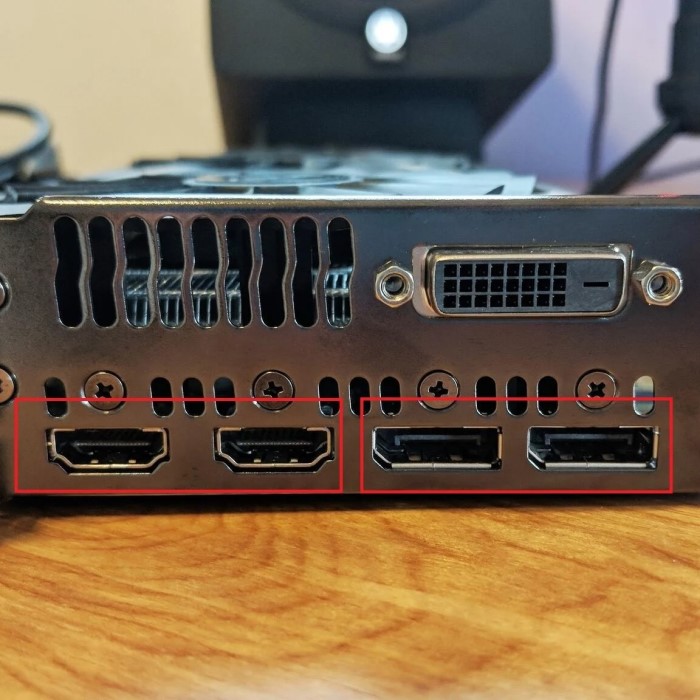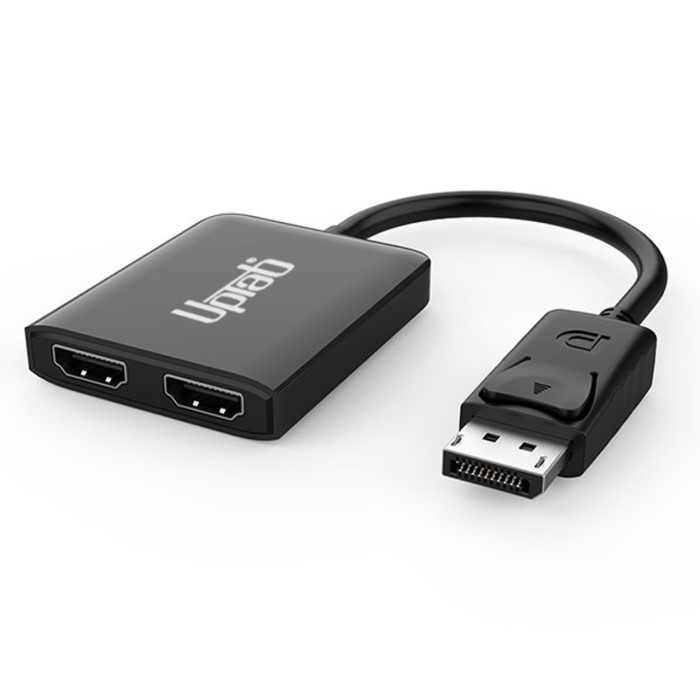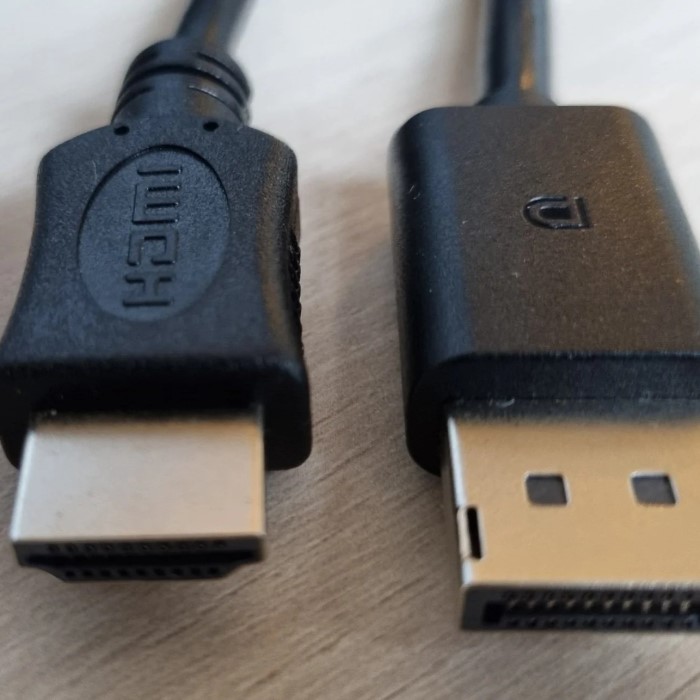Introduction to DisplayPort vs HDMI
In today’s tech-savvy world, the choice of video connections can greatly affect your audiovisual experience. Two of the most prominent standards in modern technology are DisplayPort and HDMI. Both options provide digital connections for computers, monitors, televisions, and other devices, yet they come with distinct features that make them suitable for different applications. If you’re asking yourself, “Which connection is right for you?” this guide will provide a thorough comparison of DisplayPort vs HDMI. By the end, you’ll have the knowledge needed to make a well-informed decision based on your specific needs and preferences.

Understanding DisplayPort
DisplayPort is a digital display interface developed by the VESA (Video Electronics Standards Association). It has rapidly gained popularity among PC gamers and professionals due to its advanced capabilities and features. Here’s a deeper dive into what makes DisplayPort a unique option.
Advantages of DisplayPort:
- High Resolution and Refresh Rates: DisplayPort is capable of supporting higher resolutions and refresh rates than many other interfaces. For instance, DisplayPort 1.4 can handle resolutions up to 8K at 60Hz and 4K at 120Hz. This makes it particularly attractive for users who require the best video quality.
- Multi-Monitor Support: One standout feature of DisplayPort is its ability to daisy-chain multiple monitors through a single connection. This Multi-Stream Transport (MST) capability is particularly useful for professionals and gamers alike who benefit from an expanded workspace.
- Adaptive Sync Technology: DisplayPort is equipped with Adaptive Sync, which effectively reduces screen tearing for a smoother gaming experience. This feature is crucial for competitive gaming, where every frame counts.
- Audio Capabilities: DisplayPort supports up to eight audio channels, providing high-quality sound alongside video. However, it does not offer as many advanced audio features as HDMI, such as Audio Return Channel (ARC).
Understanding HDMI
HDMI (High-Definition Multimedia Interface) is perhaps the most ubiquitous digital connection you will encounter, especially for televisions, projectors, and consumer electronic devices. Its widespread adoption is due to several advantages that cater to home entertainment systems.
Advantages of HDMI:
Device Compatibility
- Wide Range of Support: HDMI is compatible with various devices, including gaming consoles like PlayStation and Xbox, Blu-ray players, computers, laptops, and televisions.
- Universal Standard: It has been widely adopted as the standard connection for home entertainment equipment, making it easily accessible to consumers and simplifying device interoperability.
- User-Friendly Experience: Most consumers can easily connect different devices without needing multiple types of cables, thanks to HDMI’s universal nature.
High-bitrate Signaling
- Support for Ultra-High Definition: HDMI is capable of transmitting high-bandwidth video signals, including 4K resolution at 60 frames per second (Hz) and even 8K resolution at 60Hz when utilizing HDMI 2.1.
- Ideal for Next-Gen Content: This high bitrate capability is particularly beneficial for viewing ultra-high-definition video, ensuring clear and detailed imagery essential for modern gaming and streaming services.
- Enhanced Viewing Experience: By supporting impressive resolutions and refresh rates, HDMI provides a superior viewing experience that maximizes the potential of high-quality displays.
Convenience of Features
- Audio Return Channel (ARC): This feature allows audio signals to be sent back from the TV to the audio/video receiver, reducing the need for separate audio cables and streamlining your setup.
- Consumer Electronics Control (CEC): CEC enables users to control multiple HDMI-connected devices with one remote, enhancing the convenience of managing their home entertainment systems.
- Simplified Setup: These features not only simplify cabling but also enhance user experience by making operations more straightforward and efficient.
Integrated Audio
- Single Cable Solution: HDMI can transmit both audio and video signals through one cable, which eliminates the need for multiple cables and reduces clutter in the home entertainment area.
- Neater Installation: The integrated audio feature makes installation cleaner and more organized, contributing to a visually appealing setup.
- Improved Sound Quality: By supporting high-quality audio formats, HDMI ensures that users can enjoy excellent sound alongside their video content without compromising on quality.
DisplayPort vs HDMI: Key Differences
When comparing DisplayPort and HDMI, several significant differences can influence your choice. Understanding these distinctions will better inform your decision on which connection to go with based on your intended use.
1. Resolution and Refresh Rate
- DisplayPort: If high resolution and refresh rates are essential for your needs, DisplayPort leads the charge. It supports up to 8K resolutions and boasts impressive refresh rates for enhanced performance. High-refresh-rate gaming at resolutions above 1440p flourishes with DisplayPort connectivity.
- HDMI: HDMI has evolved with HDMI 2.1, which can also support 8K at 60Hz and 4K at 120Hz. However, older HDMI versions may struggle with refresh rates, making DisplayPort a better option for gamers who prioritize speed.
2. Multi-Display Setup
- DisplayPort: One of the most significant advantages of DisplayPort is its ability to connect multiple monitors using a single cable. The aforementioned MST technology allows users to daisy-chain two or more monitors to one output. This is exceptionally helpful in professional setups requiring extensive screen space.
- HDMI: HDMI typically requires a separate cable for each display. While you can connect multiple devices using HDMI, it lacks the daisy-chaining capabilities of DisplayPort, which can complicate multi-monitor configurations.
3. Audio Capabilities
- DisplayPort: DisplayPort supports high-quality audio but does not have the advanced audio features that HDMI provides. It can deliver up to eight channels of audio, but many audio return features are missing.
- HDMI: HDMI stands out when it comes to audio features. HDMI supports ARC, which allows audio to be sent back from your TV to an AV receiver or soundbar, simplifying the setup and improving audio performance. HDMI 2.1 introduces eARC, offering enhanced audio quality as well.
Use Cases: When to Use DisplayPort vs HDMI
Your specific use case will significantly influence whether you choose DisplayPort or HDMI for your setup. Here are some common scenarios to consider:
1. Gaming
- DisplayPort: For PC gamers who demand high-refresh-rate monitors, DisplayPort is usually the winner, providing the best performance and refresh rates. Features like Adaptive Sync only enhance gaming experiences, eliminating tearing and stuttering.
- HDMI: Console gamers typically opt for HDMI connections, as modern consoles like PlayStation and Xbox are designed primarily for HDMI. This compatibility ensures easy plug-and-play functionality for gaming systems.
2. Home Theater Systems
- HDMI: HDMI remains the preferred choice for connecting Blu-ray players, streaming devices, and other home theater equipment. Its ability to send both audio and video through a single cable simplifies connections and reduces wiring clutter.
- DisplayPort: If you are connecting to a high-end projector or home theater PC with advanced display capabilities, DisplayPort might be a suitable option, especially for achieving high refresh rates and resolutions.
3. Professional Use
DisplayPort
- Superior Resolution Support: DisplayPort is designed to handle higher resolutions, making it ideal for creative professionals who work with detailed content in video editing and graphic design.
- Enhanced Color Accuracy: The capability of DisplayPort to transmit a wide color gamut ensures that professionals can achieve precise color reproduction, which is crucial for tasks such as photo editing and graphic design.
- Multi-Monitor Capabilities: DisplayPort supports daisy-chaining multiple monitors, allowing users to connect several high-resolution displays to a single output. This feature enhances workspace flexibility and productivity.
- Increased Productivity: By utilizing a multi-monitor setup, creative professionals can have various applications and tools open simultaneously, streamlining their workflow and improving efficiency.
- Future-Proof Technology: DisplayPort’s support for high refresh rates and advanced features makes it a forward-looking choice that caters to evolving needs in high-performance computing.
HDMI
- Convenient for Presentations: HDMI is commonly found in projectors and display setups, making it a reliable choice for professionals who require quick and easy connections for presentations or meetings.
- Abundant HDMI Ports: Most modern projectors and displays are equipped with multiple HDMI ports, allowing users to quickly switch between devices without the hassle of cable management.
- User-Friendly Experience: The widespread use of HDMI in business environments simplifies the setup process, enabling professionals to connect their laptops or devices seamlessly.
- Standardized Connection: HDMI’s status as a universal standard means that compatibility issues are rare, providing peace of mind for users in various settings.
- Audio and Video Integration: Like DisplayPort, HDMI can transmit both audio and video through a single cable, further simplifying connections during presentations.
Conclusion
In conclusion, when evaluating DisplayPort vs HDMI, it’s essential to identify your specific needs. DisplayPort excels in providing high-resolution support, superior refresh rates, and compatibility with multiple displays, making it the preferred choice for gamers and those in creative industries. Conversely, HDMI stands out for home entertainment setups, providing widespread compatibility across devices, integrated audio features, and ease of use.
Ultimately, the choice does not come down to one being “better” than the other; it is more about what fits your needs. If you prioritize high-performance gaming and professional work, opting for DisplayPort makes sense. On the other hand, if your focus is on a home theater setup or compatibility with a wide range of devices, HDMI remains the gold standard.
By understanding the intricacies of both connections, you can confidently decide which interface best suits your requirements. Whether you’re gaming, streaming, or working, aligning your technology choices with your specific needs will ensure you get the most out of your media experience. In the battle of DisplayPort vs HDMI, the best choice is simply the one that meets your unique needs and circumstances.



